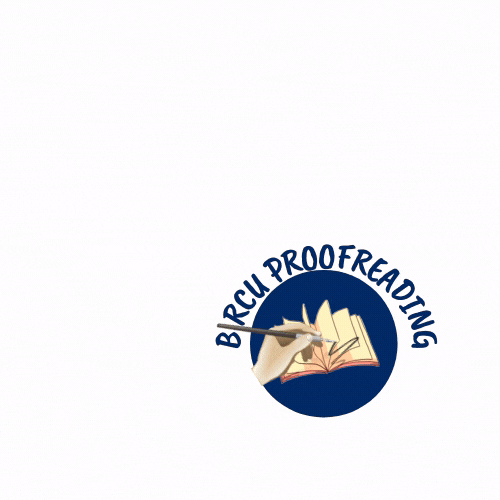Study of the growth and survival of Heterotis niloticus fry (Cuvier, 1829) under rearing conditions in Kisangani (Tshopo, DRC)
Abstract
The objective of this study was to evaluate the growth performance and survival of Heterotis niloticus fry based on local ingredients. A total of 120 fry with an initial weight of 6.9±5.2 g and an initial size of 4.5±3.1 cm in length were used for the experiment. After a seven-day acclimation period, these fry were randomly distributed in the 4 happas due to 30 fry per happa and two happens per feed. The experimental feeds were distributed manually to feed the fry until satiety, due to two feedings per day (8:30 a.m. and 4:30 p.m.). The feeding rate was given according to the body weight of the fish and readjusted after 2 weeks. For growth monitoring and survival of the fry, a sample of 40 fry was drawn from the happas due to 10 fry per happa every 6 weeks. The purpose of the operation was to measure the weight and total length of the fish. The experiment lasted 45 days. At the end of the study, the results obtained on growth and survival indicate that the average daily gain was 0.57 g/day for the fry fed with the T1 feed containing 36.5% animal protein and 0.46 g/day with the fry fed with the T2 feed containing 38% vegetable protein. The survival rate is 71.6 to 75% from one treatment to the next. The feed conversion ratio is 1.70 to 1.71 and the feed conversion ratio is 0.85 to 1.06 kg in the various treatments. The results as a whole show that pond rearing of H. niloticus can be considered for large-scale production and its extension should be encouraged.
Keywords
Full Text:
PDFReferences
Adite A, Winemiller KO, Fiogbe ED, 2006. Population structure and reproduction of the African bonytongue Heterotis niloticus in the So River-floodplain system (West Africa): implications for management. Ecology of Freshwater Fish, 15(1): 30-39. https://doi.org/10.1111/j.1600-0633.2005.00119.x
AMON Yao Nicolas, KONE Tiéhoua, KIEN NI Kakou Paul Valère et YAO Kouakou, 2021. Study of the survival and growth of the Heterotis niloticus (Cuvier, 1829) raised in concrete thanks.
Arantes CC, Castello L, Cetra M, Schilling A, 2013. Environmental influences on the distribution of arapaima in Amazon flood plains. Environmental Biology of Fishes, 96(10 -11) : 1257-1267. https://doi.org/10.1007/s10641-011-9917-9
FAO, 2017. General view of the aquaculture sector in the Democratique Republic of Congo. Departement of fisheries and aquaculture. Rome, 10 p.
Fish base, 2018. Sustainable developpement of aquacutlture in africa.
Gouré-Bi TF, Blé MC, Etchian AO, Alla YL, Ouattara IN, 2018. Effect of dietary protein and energy levels on growth, feed utilization and body composition of juvenile African bonytongue (Heterotis niloticus). Pak. J. Nutr., 17: 627-633.
IGA-IGA, 2008. Contribution à la mise au point d’aliments pour tilapia Oreochromis niloticus à base d’intrants locaux : cas du Gabon.
Jobling M, 1997. Temperature and growth: modulation of growth rate via temperature change. Pp. 225-253 In C.M. Wodd & D.G. MC Donald (eds) Global Warming: implication for Freshwater and Marine Fish. Cambridge, Cambridge University Press.
Kestemont P and Baras E, 2001. Environmental factors and feed intake mechanisms and interactions. In Houlihan D., Boujard T. and Jobling M. (Eds), Feed Intake in Fish: 131-156. https://
Kiloso mambo, 2016. Contribution à l’étude de biologie de Heterotis niloticus (cuvier 1829) du Congo supérieur au Maniema (cas du troncon Kindu-kowe) en RDC.
Micha, J.C. 1973. Etude des populations piscicoles de l’Oubangui et tentation de sélection et d’adaptation de quelques espèces à l’étang de pisciculture. Centre Technique Forestier Tropical, Nogent-sur-Marne. 110 pp.
Monentcham MSE, 2009. Alimentation et Nutrition des juvéniles de Heterotis niloticus (Arapaimidae, Teleostei). Premières estimations des besoins nutritionnels et valorisation des sous-produits végétaux. Thèse de Doctorat des Facultés Universitaires Notre Dame de la Paix Namur, Belgique, 144p.
Moreau J, 1982. Exposé synoptique des données biologiques sur Heterotis niloticus (Cuvier, 1829). FAO Synop. Pêches, 131 : 1 - 45.
Ngalya Mbenge, 2022. Potentialités de l’élevage d’Oreochromis niloticus (LINNE, 1758) : perspectives et stratégies pour développement d’une pisciculture durable à Kisangani (RDC), Thèse de doctorat inédite, Faculté des Gestion des Ressources Naturelle et Renouvelable, Université de Kisangani.
Oswald M, Glasser F, Laubier F, 2003. Techniques de pisciculture : gestion technico-économique des étangs. Gret-MAE (Ed), Mémento de l'Agronomie CIRAD, 24 p.
Philippart, 1997. Ecology and distribution of tilapias. p. 15-60. In R.S.V. Pullin and R.H. Lowe-McConnell (eds.) The biology and culture of tilapias. ICLARM Conf. Proc. 7.
Reizer, C. 1964. Comportement et Reproduction de Heterotis niloticus en petits étangs. Bois For.Trop. 95 : 49-60.
Rombough PJ, 1997. The effects of temperature on embryonic and larval development. Society for experimental biology seminar series 61, Cambridge University Press : 177-223.
DOI: https://doi.org/10.33258/birex.v7i2.8082
Article Metrics
Abstract view : 1 timesPDF - 0 times
Refbacks
- There are currently no refbacks.

This work is licensed under a Creative Commons Attribution-ShareAlike 4.0 International License.

This work is licensed under a Creative Commons Attribution-ShareAlike 4.0 International License.

_.gif)
















_.gif)


